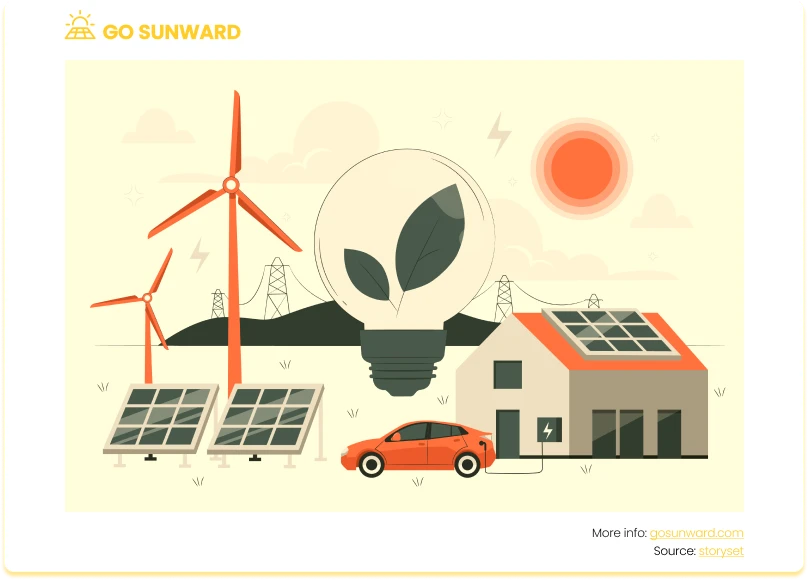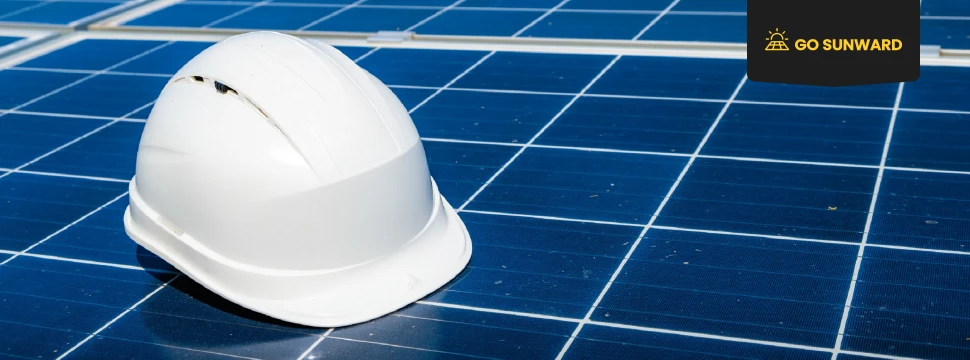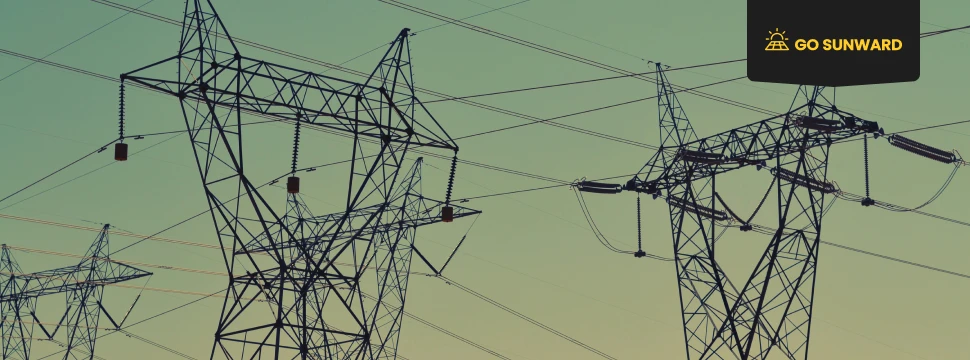Solar Panel Cost: What’s A High, Low And Average Cost?
Solar energy is becoming increasingly popular as a clean and renewable source of power. Installing solar panels on your home or business can not only help you reduce your carbon footprint but also save money on your energy bills in the long run. However, one of the key factors that influence the decision to go solar is the cost. In this article, we’ll explore the range of solar panel costs, from high-end systems to more budget-friendly options, to help you understand what to expect when investing in solar energy.
Solar Energy 101
First, let’s have a recap on solar power and how panels can be used to capture this energy.
Solar radiation, an electromagnetic emission from the sun, illuminates the Earth. While sunlight radiates all areas on Earth, the measure of solar radiation penetrating a specific point on the Earth’s surface is not uniform. Solar technologies capture this radiation and transform it into practical forms of energy. The potential of solar energy is unlimited. The volume of solar radiation that touches the Earth’s surface in just an hour surpasses the total energy consumption of the entire world for an entire year.
Solar technologies harness this power of sunlight, either by utilizing photovoltaic (PV) solar panels or by using mirrors to concentrate solar radiation in a technology known as solar CSP. This harnessed energy can then be utilized to generate electricity. It can also be preserved within batteries or thermal storage systems, primed for future utilization.
For residential use, solar power provides homeowners with a sustainable and cost-effective way to generate electricity. Rooftop solar panels are commonly installed on residential properties, capturing sunlight and converting it into electricity through photovoltaic solar cells. This energy can power the home’s appliances, lighting, and other electrical needs. Excess energy generated during sunny periods can be fed back into the grid through net metering. Which allows homeowners to earn credits or reduce their utility bills. Battery storage systems are also increasingly integrated with residential solar setups, enabling energy storage for use during non-sunny hours.

Understanding Solar Panel Costs
Average prices are typically quantified in terms of dollars per watt or kilowatt-hour (kWh). Our research suggests that, in the United States, the average cost of solar panels ranges between $2.50 to $3.50 per watt. This pricing encompasses not only the expenses associated with the solar panels themselves but also the costs related to their installation.
In terms of an entire residential solar panel system, it’s worth noting that a typical system may range from approximately $15,000 to $25,000, before any incentives, rebates and net metering schemes are considered.
Factors Influencing Solar Panel Costs
Besides technology type, many other factors influence the cost of solar panels, and each factor plays a crucial role in determining the overall price of solar energy systems.
System Size and Capacity: The size and capacity of the solar panel system you choose will significantly impact the overall cost. Larger systems with higher capacity can generate more electricity but typically come with a higher upfront investment.
Location and Solar Resource: The geographical location of your solar panel installation plays a crucial role in determining its efficiency and cost-effectiveness. Areas with ample sunlight and favorable solar resources can maximize energy production, potentially reducing costs over time.
Installation and Labor Costs: The cost of installation and labor is a significant component of the total expense. Professional installation ensures proper setup and performance, but it can add to the overall cost of your solar panel system.
Incentives and Rebates: Government incentives, tax credits, and rebates can help offset the cost of your solar panel system. These financial incentives vary by location and can significantly reduce the upfront expense of going solar.
Warranty and Maintenance Expenses: Solar panel systems come with warranties that cover equipment for a specified period. Consider the warranty terms and potential maintenance costs when calculating the overall cost of ownership. High-quality panels often come with longer and more comprehensive warranties, which may influence your decision-making process.
Solar Panel Cost: What’s A High, Low And Average Cost?
This part of the article will take a deep dive into the varying costs of solar panel systems, from high-end, premium options to lower-cost options, shedding light on the wide range of possibilities for every budget.
1. High Cost Solar Panels
According to our research, the average cost of high-end solar panels typically ranges from $300 to $700 per panel. Generally, high-end solar panels are known for their superior performance and efficiency.
Key features of high-cost panels
- Premium solar panels are known for their exceptional efficiency, which means they can convert more sunlight into electricity. This higher efficiency often increases energy production from a smaller panel array.
- High-end panels typically use advanced monocrystalline silicon or thin-film technologies, enhancing their energy capture capabilities and overall performance.
- They often come with sleek, modern designs that can enhance the visual appeal of your solar installation. They are also built with durability in mind, ensuring they withstand various weather conditions and last for many years
- Premium panels are engineered to perform exceptionally well in low-light or overcast conditions, ensuring consistent energy production even when the sun isn’t shining brightly.
Examples:
- Monocrystalline Solar Panels: Monocrystalline solar panels are renowned for their high efficiency and performance. They are made from single-crystal silicon, which allows for better electron flow and higher energy conversion. Monocrystalline panels are known for their sleek appearance and space-efficient design. These panels often have efficiency ratings of 20% or higher, making them one of the most efficient options available.
- PERC (Passivated Emitter Rear Cell) Solar Panels: PERC technology enhances the efficiency of solar panels by passivating the rear surface, reducing electron recombination. This technology allows for improved energy capture, particularly in low-light conditions.
Bifacial Solar Panels: Bifacial panels are designed to capture sunlight from both the front and back sides, increasing overall energy production. They can be particularly effective in environments with reflective surfaces, such as snow-covered ground or white roofs.
2. Medium Cost Solar Panels
According to our research, the average cost of medium-range solar panels typically ranges from $200 to $400 per panel. Standard solar panels balance cost and efficiency, making them a popular choice for many residential solar systems and commercial installations.
Key features of mid-range solar panels:
- Standard panels offer reasonable efficiency levels while remaining cost-effective. This makes them a practical choice for those looking to balance performance and affordability.
- These panels typically use polycrystalline or standard monocrystalline silicon technology, which has proven reliability and solid performance.
- Standard panels perform well under typical sunlight conditions, providing consistent energy production for homes and businesses.
- Due to their affordability and reliable performance, standard panels are frequently chosen for residential solar installations.
Examples:
- Polycrystalline Solar Panels: They are made from multiple silicon crystal fragments, which makes them less efficient than monocrystalline panels but more affordable. Polycrystalline panels typically have efficiency ratings ranging from 15% to 18% and are a common choice for residential installations due to their balance between cost and performance.
- Thin-Film Solar Panels (Amorphous Silicon): those using amorphous silicon technology offer a cost-effective alternative to crystalline silicon panels. T hese panels are lightweight and flexible, making them suitable for specific applications like solar shingles or portable solar chargers. While amorphous silicon panels have lower efficiency compared to crystalline panels (usually around 10% to 12%), they can be an attractive option for budget-conscious consumers.
Multi-Crystalline (Multi-Si) Solar Panels: They are made from multiple silicon crystal structures, which are more efficient than amorphous silicon but slightly less efficient than monocrystalline panels. Multi-crystalline panels typically have efficiency ratings in the range of 16% to 19%, making them suitable for various residential and commercial installations.
3. Low Cost Solar Panels
According to our research, the average cost of low-cost or budget-friendly solar panels typically ranges from $150 to $250 per panel. These panels are often associated with lower efficiency and may use older technology or materials, but they offer a more affordable entry point for those on a tight budget.
For those with budget constraints, budget-friendly solar panels offer an affordable entry into solar energy,
Key features of low-cost solar panels:
- These panels may have lower energy conversion efficiency or use older technology. This results in slightly reduced energy production compared to premium or standard panels.
- To reduce manufacturing costs, low-cost panels often have a simpler design and fewer advanced features. They may lack some of the bells and whistles found in high-end panels.
- To compensate for their lower efficiency, budget-friendly panels may require a larger installation area to generate the same amount of electricity as higher-end panels.
- Low-cost panels can be suitable for specific applications where maximum efficiency is not required, such as off-grid systems, rural electrification projects, or smaller residential installations.
Examples:
- Copper Indium Gallium Selenide (CIGS) Thin-Film Solar Panels: CIGS thin-film solar panels offer a cost-effective alternative to traditional crystalline silicon panels. They can be produced with lower material costs and are known for their flexibility and lightweight design. CIGS panels typically have efficiency ratings ranging from 10% to 15%, making them a competitive low-cost option for specific installations.
- Organic Photovoltaic (OPV) Solar Panels: Organic photovoltaic solar panels are made from organic materials and are known for their low production costs and flexibility. They can be produced using printing processes, reducing manufacturing expenses. OPV panels typically have lower efficiency ratings, often around 5% to 8%, but are suitable for niche applications such as portable solar chargers and lightweight solar-integrated products.
Other Cost-Saving Strategies
While the type of solar panels you choose is a significant factor in determining costs, there are additional cost-saving strategies that you can consider to try. Here are some tips for lowering costs!
#1 DIY Solar Panel Installation
For those with the necessary skills and experience, a do-it-yourself (DIY) solar panel installation can save on labor costs. However, it’s essential to be knowledgeable about solar systems, local regulations, and safety measures before attempting a DIY project.
#2 Community or Shared Solar Programs
Community or shared solar programs allow individuals or businesses to invest in solar energy without the need for rooftop installations. Participants share the benefits of a solar installation located in a centralized location, often reducing upfront costs.
#3 Leasing or Power Purchase Agreements (PPAs)
Leasing or entering into power purchase agreements (PPAs) with solar providers can be a cost-effective option. In these arrangements, you don’t own the solar panels but instead pay a fixed rate for the electricity generated by the system. This can eliminate upfront costs, making solar energy accessible to a broader audience.
Don’t Forget The Payback Period and ROI
Calculating the time it takes to recoup your investment and assessing long-term savings and potential income from excess energy production are essential steps in evaluating the total cost of ownership.
The payback period represents the time it takes for your solar panel system to generate savings that equal or surpass your initial investment. This period can vary depending on factors like system cost, energy production, and local electricity rates.
The Return on Investment (ROI) measures the profitability of your solar investment over time. It considers the total savings and potential income from selling excess energy back to the grid. A shorter payback period and a higher ROI indicate a more financially rewarding solar investment.
Looking Beyond Costs: The Broader Benefits of Solar Energy
Solar energy offers many advantages beyond mere cost savings, making it a pivotal force in the transition toward sustainable energy solutions. These broader benefits span environmental conservation, economic growth, energy security, water efficiency, and enhanced grid resilience.
Foremost, solar power significantly contributes to environmental well-being. Harnessing energy from the sun substantially reduces greenhouse gas emissions, playing a critical role in combatting climate change. This eco-friendly approach fights pollution and improves air quality and public health.
Solar energy’s sustainability is another key asset, with its abundant and renewable nature ensuring a consistent energy supply. This reduces dependence on finite fossil fuels, mitigating the risks of energy disruptions and global resource conflicts.
In regions prone to water scarcity, solar’s minimal water consumption stands out. Unlike traditional power generation methods, which are water-intensive, solar energy demands little water resources. This makes it particularly essential in arid areas.
Solar power also enhances energy efficiency by minimizing transmission losses when generated close to consumption points. This improves grid stability and reduces energy wastage.
The solar industry further stimulates economic growth by creating jobs in manufacturing, installation, and maintenance. Lastly, its decentralized nature strengthens grid resilience by diversifying energy sources, reducing vulnerability to large-scale grid failures.
What Are The Next Steps For You?
Researching solar panel costs is a crucial step for consumers considering a solar panel installation. Now that you’ve decided solar panels are for you and you roughly know the high, medium and low average costs, what are the next steps?
Many solar panel manufacturers, solar installation companies, and government agencies offer online solar calculator tools. These tools allow you to estimate the size of a solar panel system you may need based on your location, panel wattage, energy consumption, and other relevant factors. We also have a number of articles that can help you with this.
It is important to reach out to several local solar installation companies to request quotes for your specific project. By comparing multiple quotes, you can better understand the average cost in your area. Provide detailed information about your energy needs and location for accurate estimates.
Many governments and states offer incentives, tax credits, and rebates to encourage solar adoption. Research these incentives on official government websites or consult with local solar installers to understand how they can lower your overall costs.
Besides MarketWatch, consider reading industry reports and news articles from reputable sources like the Solar Energy Industries Association (SEIA), Greentech Media, or the National Renewable Energy Laboratory (NREL). These sources often provide insights into current trends, pricing, and incentives in the solar industry.
Consider hiring a professional energy auditor or consultant to assess your energy needs and potential savings from solar energy. They can provide valuable insights into the cost-effectiveness of a solar panel system tailored to your specific situation.
Look for local solar expos, workshops, and community events related to renewable energy. These events often feature experts who can answer questions and provide cost-related information.
Explore various financing options such as solar loans, leases, or power purchase agreements (PPAs). Each financing method may have a different impact on your upfront costs and long-term savings.
Conclusion
Solar panel costs can vary widely based on your preferences, needs, and budget. High-end systems offer top-of-the-line technology and performance, while budget-friendly options can make solar energy accessible to a broader audience.
Understanding the factors influencing solar panel costs and evaluating the total cost of ownership can help you make an informed decision about transitioning to solar power. Whether you choose high, average, or low-cost options, solar panels can be a worthwhile investment for both your finances and the environment.




